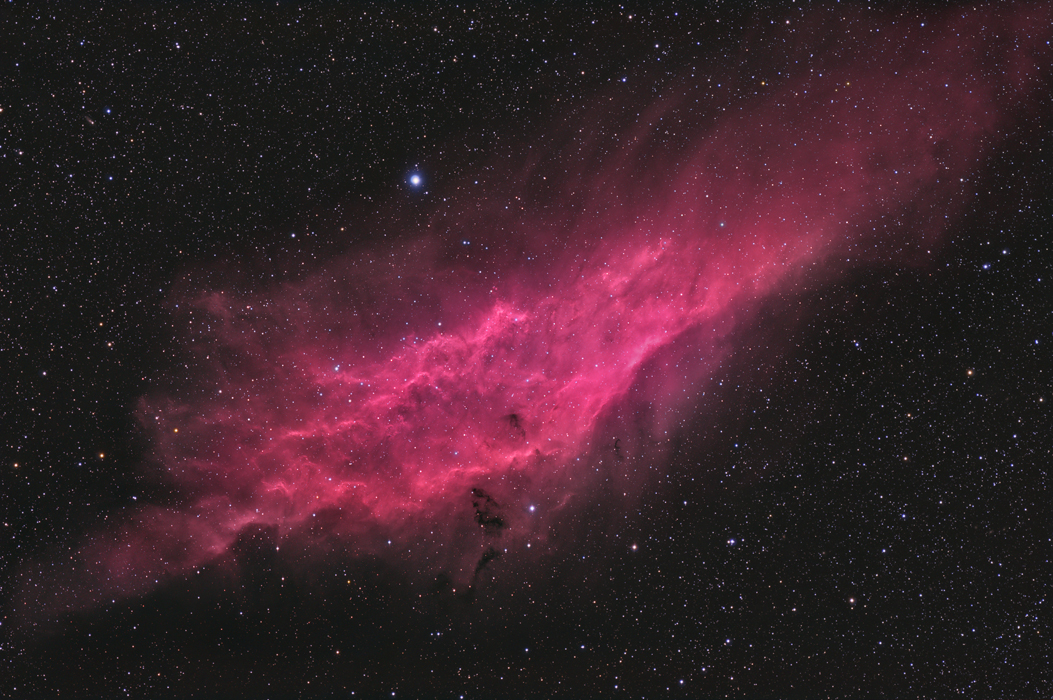NGC 1499 (California Nebula)
Characteristics:
Magnitude: ?
Size: 1 x 4 degrees
FOV: 2.6 x 3.9 degrees
Distance:
1140 light years
RA (Jnow): 4h 01m 35s
Dec (Jnow): +36 degrees 25' 52"
Position Angle: minus 2 degrees
Description:
This is a 7.5 hour exposure of NGC 1499, a large hydrogen emission
nebula in Perseus. NGC 1499 is one of a few nebulae that emit
strongly in both H alpha (red) and H beta (blue), with little OIII
emission, skewing the usual red color typical of emission nebulae
towards the blue. The star responsible for exciting hydrogen
emission from the nebula is thought to be Xi Persei, a "runaway star"
that is described on Rob
Gendler's website. Feel free to check out the larger size
images above, as well as my H alpha image
used as part of this color composite.
Photographic Details:
Dates: September 16 and 20, 2007: Ha; September 17 and 18:
RGB.
Scope: Takahashi
FSQ106 at f5 on the Takahashi NJP
Mount.
Autoguider: SBIG ST-402 with
e-finder.
Camera: STL11K -20C.
Filters: Astronomiks
LRGB set (50mm unmounted); Baader 7nm
Ha filter (50mm unmounted).
Exposures: Ha- 12 x 20';
Red- 10 x 6'; Green- 12 x 5'; Blue- 11 x 8'.
Total
exposure 7.5 hours.
Conditions: Temperature was generally cool 55-60 degrees
F average. Transparency varied, and several nights of exposure
were need to obtain the very best frames
for processing.
Post-processing:
Calibrated, aligned, and Sigma Clip combined
in Maxim, followed
by DDP
in ImagesPlus (IP). Further processing in Photoshop CS (16
bit format). The RGB was constructed as usual. I then
quantitated the color of the nebula in PS using the color sampler
(eyedropper) tool, noting the relative proportions of R, G, and
B. The Ha signal was then added to the RGB in the following
proportions (lighten mode), in order to preserve the color balance
determined by the eyedropper tool: Ha-Red, 50%; Ha-Green, 7%;
Ha-Blue, 15%. In this way, the colors remained "true" to the
original RGB while at the same time allowing the Ha to enhance color
and detail. This enhanced "RGB" image was then used to provide
the color, with Ha used as luminance (i.e., Ha"RGB").
Please
note: Graphics on this website may not be reproduced without
author permission.
Back to Nebulae
Home

